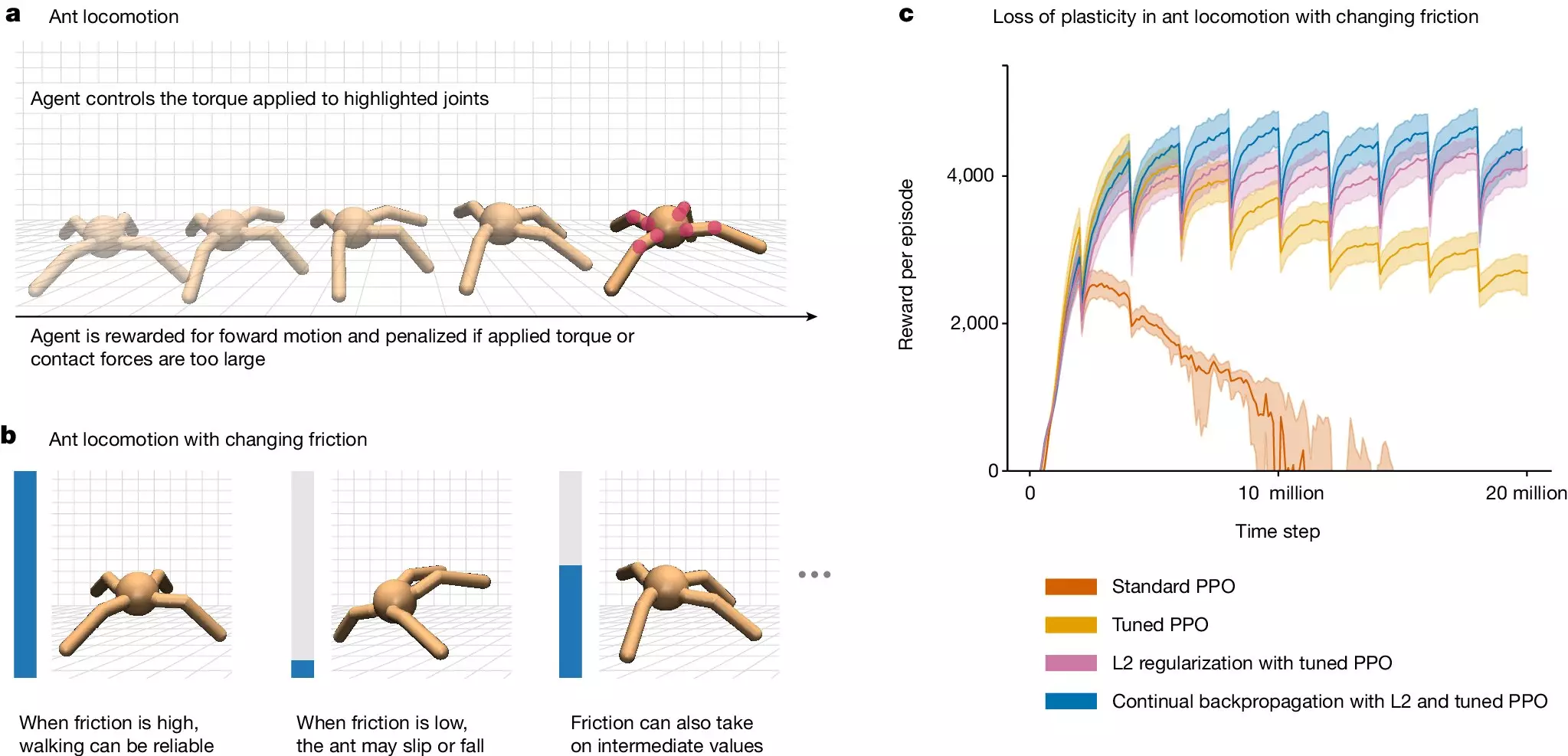Deep learning has long been considered a groundbreaking technology with the potential to revolutionize multiple industries. However, a recent paper published by researchers from the Alberta Machine Intelligence Institute (Amii) sheds light on a critical issue within deep learning models that has not received much attention – the loss of plasticity in deep continual learning. This phenomenon, identified as a major challenge by the research team, highlights the limitations of current deep learning models when it comes to adapting continually in real-world scenarios.
The Problem of Loss of Plasticity
The loss of plasticity refers to the inability of deep learning agents engaged in continual learning to retain the ability to learn new information and relearn previously acquired knowledge. The research team discovered that this problem significantly impacts the performance of deep learning models, ultimately hindering their effectiveness in handling the complexity of real-world data. This phenomenon poses a significant obstacle to building advanced AI systems that can function effectively and adapt to evolving environments.
Many existing deep learning models are not designed for continual learning, which exacerbates the issue of loss of plasticity. For instance, models like ChatGPT are trained for a specific period and then deployed without further learning. Integrating new data into an existing model’s memory can be challenging, often requiring a complete retraining of the model from scratch. This approach not only consumes time and resources but also restricts the adaptability of the model in dynamic environments, such as financial markets.
The research team conducted a series of experiments to investigate the prevalence of loss of plasticity in deep learning systems. Through supervised learning tasks, they demonstrated that deep learning networks progressively lose their ability to differentiate between tasks as they continue to learn. This finding underscores the widespread nature of the problem within deep learning models and emphasizes the urgent need for solutions to address it.
In their quest to mitigate the effects of loss of plasticity, the research team introduced a novel method known as “continual backpropagation.” This modified approach aims to address the inefficiencies of traditional backpropagation algorithms by continuously reinitializing redundant units within the neural network. By periodically resetting inactive units during the learning process, the researchers observed that models could sustain continual learning for extended periods, potentially indefinitely. This innovative method offers a promising solution to the challenge of loss of plasticity in deep learning networks.
The discovery of loss of plasticity in deep learning models raises important questions about the fundamental issues underlying current AI technologies. While the team’s continual backpropagation approach shows promise in overcoming this challenge, further research and innovation are necessary to enhance the adaptability and efficiency of deep learning systems. By bringing attention to the issue of loss of plasticity, the research team hopes to inspire other researchers to explore new solutions and advancements in the field of deep learning.
The study on loss of plasticity in deep continual learning sheds light on a critical issue that has significant implications for the future of AI development. By addressing the challenges posed by this phenomenon, researchers are paving the way for the creation of advanced AI systems capable of thriving in dynamic and complex environments. The innovative solutions proposed by the research team offer valuable insights into the potential of continual backpropagation to revolutionize the field of deep learning and drive progress towards human-level artificial intelligence.


Leave a Reply